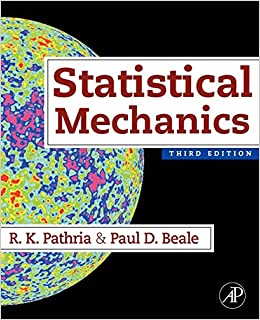The Hamiltonian of this model may be written as [ H=-frac{1}{2} c sum_{i eq j} sigma_{i} sigma_{j}-mu
Question:
The Hamiltonian of this model may be written as
\[
H=-\frac{1}{2} c \sum_{i eq j} \sigma_{i} \sigma_{j}-\mu B \sum_{i} \sigma_{i}
\]
The double sum here is equal to \(\sum_{i} \sigma_{i} \sum_{j} \sigma_{j}-\sum_{i} \sigma_{i}^{2}=(N L)^{2}-N\) which, for \(N \gg 1\), is essentially equal to \(N^{2} L^{2}\). It follows that asymptotically our Hamiltonian is of the form
\[
H=-\frac{1}{2}(c N) N L^{2}-\mu B N L
\]
Now, this is precisely the Hamiltonian of the model studied in Problem 12.4, except for the fact that the quantity \(q J\) there is replaced by the quantity \(c N\) here. We, therefore, infer that, in the limit \(N ightarrow \infty\) and \(c ightarrow 0\) (such that the product \(c N\) is held fixed), the mean-field approach of Problem 12.4 would be exact for the present model - provided that the fixed value of the product \(c N\) is identified with the quantity \(q J\). It follows that the critical temperature of this model would be \(c N / k\).
Step by Step Answer:






